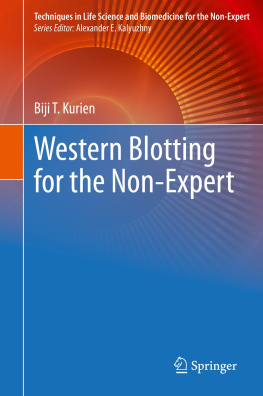Table of Contents
List of tables
- Tables in Chapter 2
- Tables in Chapter 4
- Tables in Chapter 6
- Tables in Chapter 7
- Tables in Chapter 8
- Tables in Chapter 10
- Tables in Chapter 11
- Tables in Chapter 12
- Tables in Chapter 13
List of illustrations
- Figures in Chapter 1
- Figures in Chapter 2
- Figures in Chapter 4
- Figures in Chapter 5
- Figures in Chapter 6
- Figures in Chapter 7
- Figures in Chapter 8
- Figures in Chapter 9
- Figures in Chapter 10
- Figures in Chapter 11
- Figures in Chapter 12
- Figures in Chapter 13
- Figures in Chapter 14
- Figures in Chapter 15
Landmarks
Table of Contents
The Membranes of Cells
Third Edition
Philip L. Yeagle
University of Connecticut, Storrs, CT, USA

Dedication
to Arlene, Jay, David, Jenn, Alice, and Xan
Copyright
Academic Press is an imprint of Elsevier
125, London Wall, EC2Y 5AS.
525 B Street, Suite 1800, San Diego, CA 92101-4495, USA
50 Hampshire Street, 5th Floor, Cambridge, MA 02139, USA
The Boulevard, Langford Lane, Kidlington, Oxford OX5 1GB, UK
Copyright 2016, 1993, 1987 Elsevier Inc. All rights reserved.
No part of this publication may be reproduced or transmitted in any form or by any means, electronic or mechanical, including photocopying, recording, or any information storage and retrieval system, without permission in writing from the publisher. Details on how to seek permission, further information about the Publishers permissions policies and our arrangements with organizations such as the Copyright Clearance Center and the Copyright Licensing Agency, can be found at our website: www.elsevier.com/permissions.
This book and the individual contributions contained in it are protected under copyright by the Publisher (other than as may be noted herein).
Notices
Knowledge and best practice in this field are constantly changing. As new research and experience broaden our understanding, changes in research methods, professional practices, or medical treatment may become necessary.
Practitioners and researchers must always rely on their own experience and knowledge in evaluating and using any information, methods, compounds, or experiments described herein. In using such information or methods they should be mindful of their own safety and the safety of others, including parties for whom they have a professional responsibility.
To the fullest extent of the law, neither the Publisher nor the authors, contributors, or editors, assume any liability for any injury and/or damage to persons or property as a matter of products liability, negligence or otherwise, or from any use or operation of any methods, products, instructions, or ideas contained in the material herein.
ISBN: 978-0-12-800047-2
British Library Cataloguing-in-Publication Data
A catalogue record for this book is available from the British Library
Library of Congress Cataloging-in-Publication Data
A catalog record for this book is available from the Library of Congress
For information on all Academic Press publications visit our website at http://store.elsevier.com/
Typeset by MPS Limited, Chennai, India www.adi-mps.com
Printed and bound in the United States of America

Preface
Philip L. Yeagle
The reception of the first two editions of The Membranes of Cells was gratifying. Both editions have been useful to students and postdocs who needed to become conversant in membranes since this subject underlies so much of cell biology, biochemistry, microbiology, and biophysics. These editions have also aided senior researchers embarking on research requiring a familiarity with the fundamentals of membrane structure and function.
This third edition of The Membranes of Cells is written in response to a revolution in the study of cell membrane structure and function. At the time of the second edition, virtually no high-resolution structure information was available for membrane proteins. Now over 1000 high-resolution structures of membrane proteins are available from X-ray crystallography, electron crystallography, and nuclear magnetic resonance (http://blanco.biomol.uci.edu/mpstruc/). While this represents only about 1% of the Protein Data Bank (http://www.rcsb.org/pdb/home/home.do) and only a small fraction of all known membrane proteins, nevertheless it provides a critical window through which we can see much more clearly the amazing functions catalyzed by membrane proteins. That universe of new information is well represented in this third edition. It is the new foundation of our understanding of membrane function. And it both inspires and informs the writing of the third edition of The Membranes of Cells.
As this book is intended primarily as a resource for learning about the membranes of cells, the referencing is representative, not exhaustive. The second edition introduced in-text referencing as requested by users of the book. That feature is continued in this edition. The references are often to review articles to help introduce students of membranes to the field. Therefore sincere apologies to those many scientists who contributed to the understandings described herein, but whose primary papers may not have been included in the reference lists.
References included date from the 18th century to the 21st century. It is important to acknowledge the roots of many of our understandings of membrane structure and it is intellectually satisfying to trace some of those understandings as far back as Mr Franklin! At the same time, enormous progress has been made in the 21st century so naturally many of the references are very recent publications.
The figures of membrane protein structure in this edition were created from multiple resources. PDB files were obtained from the Protein Data Bank and membrane structures were initially explored through Membrane Proteins of Known Structure (links for both these databases are listed above). The figures were drawn using PyMol (http://pymol.org) or VMD (Humphrey W, Dalke A, Schulten K. VMDVisual Molecular Dynamics. J Mol Graphics 1996;:338). I thank Professor Victoria Robinson for help in creating those figures. Many of the molecular dynamics images were obtained from files available at MemProtMD (http://sbcb.bioch.ox.ac.uk/memprotmd/beta/). I thank Professor Mark Sansom, University of Oxford, and his colleagues for introducing me to molecular dynamics of membranes over a number of years. I also thank Virge Kask for drawing several of the more artistic membrane figures in the book.
In addition to the many scientists who were acknowledged in previous editions, I would like to highlight for this edition the professional opportunities and intellectual insights provided by Professor Tony Watts at the University of Oxford, during my sabbatical when this book project was begun. I thank both him and Valerie Watts for their generous hospitality. Appreciation is due to Rutgers University and President Emeritus Richard McCormick for that sabbatical following service as Dean of Arts and Sciences and Interim Chancellor.












